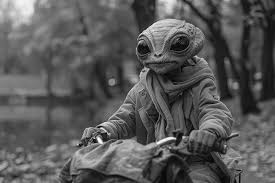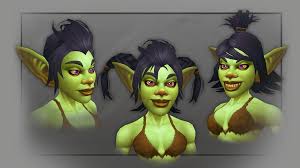Exploring Goblin Culture: Myths, Practices, and Influence

Goblin culture is a fascinating aspect of folklore that has captured the imagination of storytellers, artists, and audiences for centuries. Rooted in mythological traditions, goblins are often depicted as mischievous and cunning beings, embodying both the magical and the menacing. However, beyond their portrayal in popular media, goblins have a rich cultural narrative that varies across regions and periods. This article delves into the origins, beliefs, practices, and modern-day interpretations of goblin culture.
Page Contents
ToggleOrigins and Mythological Roots

Goblin culture finds its roots in European folklore, where they were first described as small, grotesque creatures with a penchant for trickery. The term “goblin” is believed to have originated from the Old French word gobelin, which itself may have derived from the Greek word kobalos, meaning rogue or mischievous spirit.
In early folklore, goblins were often associated with natural landscapes such as forests, caves, and mountains. These settings became synonymous with goblin activity, where they were said to protect treasures, play pranks on travelers, or serve as guardians of mystical secrets. Their characteristics varied by region—while some tales portrayed goblins as malevolent beings, others described them as mischievous but ultimately harmless.
Beliefs and Superstitions
Goblins are deeply intertwined with local superstitions and beliefs. Many cultures viewed goblins as supernatural entities that influenced daily life. Farmers, for instance, might blame a poor harvest on goblin mischief, while missing household items were often attributed to their pranks.
In some traditions, goblins were seen as protectors of the earth and its resources. They were believed to punish those who exploited nature, reflecting an early form of environmental stewardship. Conversely, goblins were also feared for their ability to curse or harm those who offended them, which led to the practice of leaving offerings or engaging in rituals to appease them.
Goblin Practices and Traditions
Goblin culture includes a variety of practices that reflect their dual nature as both tricksters and protectors. Folklore often describes their nocturnal activities, during which they would interact with humans, animals, and the natural world.
Trickery and Humor
One of the most enduring traits of goblins is their love of trickery. They are depicted as masters of illusion and deception, using their skills to confuse or amuse humans. This playful side is celebrated in many stories, where goblins outsmart greedy individuals or teach important moral lessons through their antics.
Craftsmanship and Treasure
Goblins are also known for their craftsmanship, particularly in creating intricate tools, jewelry, and weapons. In some legends, they are credited with forging magical items of immense power, such as swords or talismans. These artifacts often played pivotal roles in hero quests, adding a layer of mystique to goblin lore.
Rituals and Offerings
In some cultures, rituals were performed to honor or ward off goblins. These ceremonies included leaving food, coins, or trinkets in designated areas, such as forest clearings or near caves, to ensure peace and avoid mischief. The act of offering was also a way of acknowledging the goblin’s presence and influence over the natural world.
Representation in Literature and Art

Goblin culture has been immortalized in literature and art, from medieval texts to modern fantasy novels. Early depictions often emphasized their grotesque features and malevolent tendencies, aligning them with other creatures of the night, such as trolls and ogres. However, contemporary interpretations have evolved to present goblins as more nuanced characters.
Early Literature
In early European literature, goblins were often cast as antagonists in morality tales. Their actions served as cautionary examples, warning readers against greed, pride, or disrespect for nature. These stories laid the foundation for their enduring role in folklore.
Modern Fantasy
The modern fantasy genre has reimagined goblins in various ways, from the cunning merchants of J.R.R. Tolkien’s The Hobbit to the industrious and clever creatures in video games and films. These representations have expanded the scope of goblin culture, offering audiences new perspectives on their behavior, motivations, and societal structures.
Goblins in Modern Culture

Today, goblins continue to influence popular culture, appearing in books, movies, games, and even music. Their adaptability as characters allows them to fit into diverse narratives, from comedic to dark and dramatic.
Goblin Culture Tropes in Media
Modern media often emphasizes certain tropes associated with goblins, such mariatogel as their small stature, greed for gold, and mischievous nature. These traits make them ideal for roles as comic relief or as cunning adversaries in fantasy worlds.
Symbolism and Themes
Goblins have also become symbols of resistance and nonconformity. Their rebellious nature and rejection of societal norms resonate with audiences seeking characters who challenge authority and embrace individuality.
Festivals and Celebrations
In some regions, festivals celebrating goblin folklore have emerged. These events often include costumes, storytelling, and performances that bring goblin myths to life. They serve as a way to preserve and share the cultural heritage associated with these mythical beings.
Goblin Culture and Environmentalism
One of the most interesting aspects of goblin culture is its connection to environmental themes. Stories of goblins punishing those who harm nature highlight the importance of balance and respect for the environment. This message has gained renewed relevance in the context of modern ecological challenges, making goblins unexpected advocates for sustainability.
Misconceptions and Stereotypes
While goblins are often portrayed as villainous or grotesque, these depictions can overshadow the richness of their cultural narrative. Modern interpretations that focus solely on their negative traits risk perpetuating stereotypes that simplify their role in folklore. A more balanced view acknowledges their complexity as both tricksters and protectors.
Conclusion Goblin Culture
Goblin culture offers a unique window into humanity’s relationship with the mystical and the unknown. From their mythological origins to their modern-day representations, goblins embody a blend of mischief, wisdom, and mystery. By exploring their stories and practices, we can uncover deeper insights into the values, fears, and aspirations of the cultures that created them. Goblins remind us of the power of storytelling to connect past and present, reality and imagination, and humans with the natural world.












